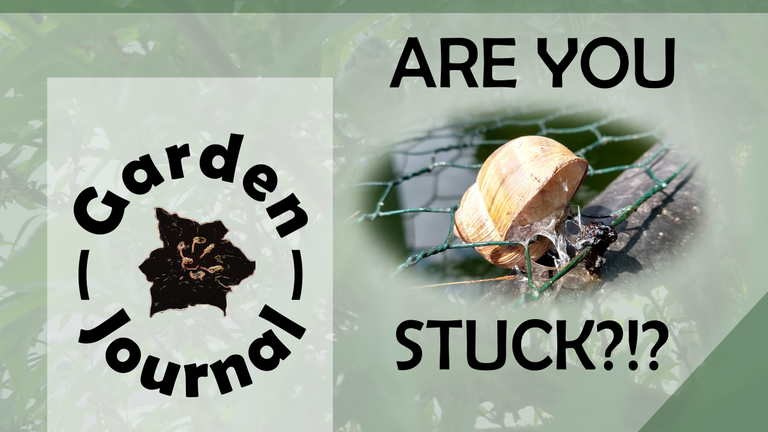
Here I am, watering the dirt, and I hear you asking: 'Why da heell you diddly done do that, exator?!' Let me tell you, I ain't gone mad or something, it's actually 200 IQ next level gardening tactics! I gon' explain soon...
Oh, and the snail is freed and unmolested!
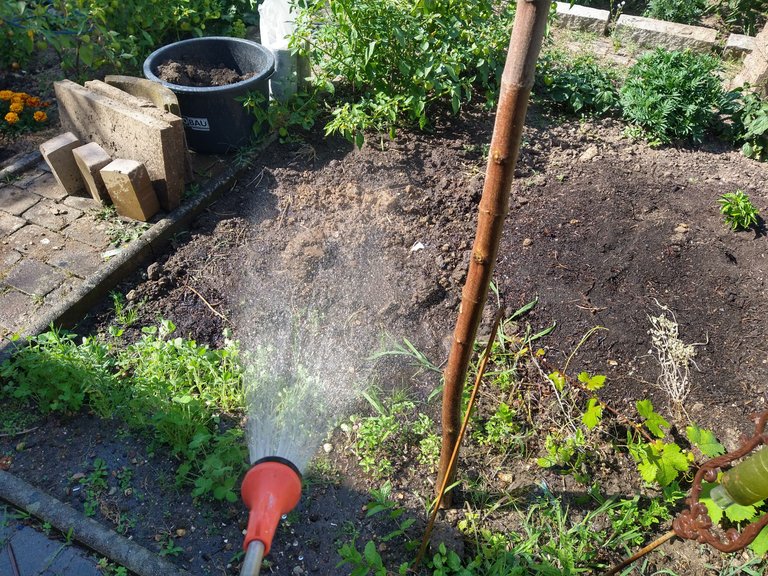
Seems like the sun has shot most of their wad, so beeing in the garden has become a little bit more relaxing and less of a sauna experience. The days started getting shorter already, which is always quite depressing, but midsummer is when all the plants are going crazy and we have quite a bit going on in the garden. Let's sit in the shade of the latest acquisition, enjoy one of the cucumbers while watching @sgt-dan's stream and see what happened so far since the last garden update!

I often watch splinterlands streamers to have some company while spending time in the garden. Look at my confusion as the first 'Suyo Long' or 'Saikó' cucumber I was tasting was incredibly sweet, almost melon like.
Seed production
Shopping for new seeds is one of the most exciting times, especially in the boring winter months where nothing else is going on. But buying your beloved and trusted strains every season is taking away funds for funs, hence the need for producing own seeds.
Harvesting seeds is not rocket science, atleast for veggies that are consumed in a somewhat ripe state, but even from those we can't blindly squeeze some tomato goo on a paper towel and expect to have the same experience year after year.
In order to have a somewhat useful result, two important requirements have to be met:
- Sufficient amount of individuals to keep genetic variety up and avoid inbreeding.
Professionals usually use hundreds of plants, but at least 50-100. - Avoid crossbreeding
No plant of the same species in a radius of 500-1000 m allowed.
The latter is quite hard, actually impossible for most hobby gardeners and I'm wondering how even professional seed producers manage to achieve this. There is a workaround though. We just have to protect the plants from bees and wild pollen, either by putting them indoor or protecting the flowers with a little teabag.
But for some plants it's quite hard, or impossible even, to have a decent amount of individuals. Take the zucchini for example. Who in their right mind would plant more than one or two of those? I'm already getting sick of them and the neighbours might as well very soon.
In this case you might be able to use the seeds for one more year, but unless you get new individuals in there, I would not bother using those plants for seed production again.
A lot of gardeners complain about the F1 type seeds and how they can't be used to harvest your own seeds, but given that most small gardeners don't even have the possibility to breed their own strain, I would say that's pretty hilarious.
Anyways. Here's how I make seeds from peppers. In this case it's a little cascabel pepper called 'chocolate cherry'. I like to fill them with cream cheese and eat them as antipasti. Very delicious! Unfortunately only two of them sprouted and now I have to use those for seed production:
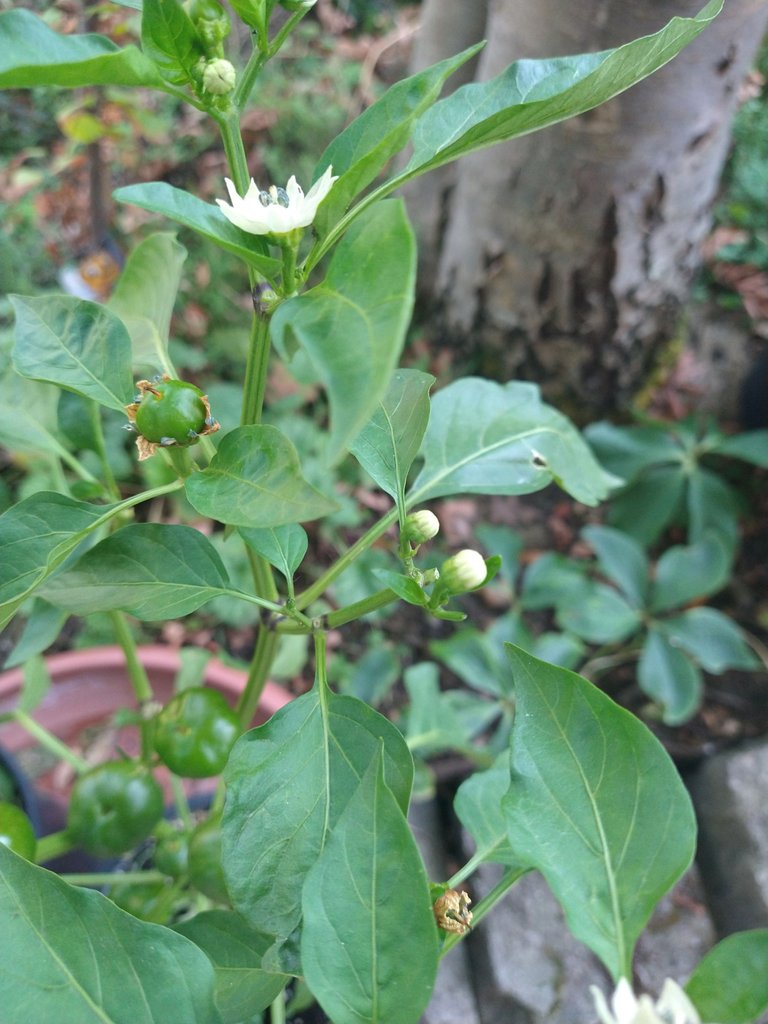
1. Find flowers that are about to pop open. I also remove most of the leaves around them so they are not in my way
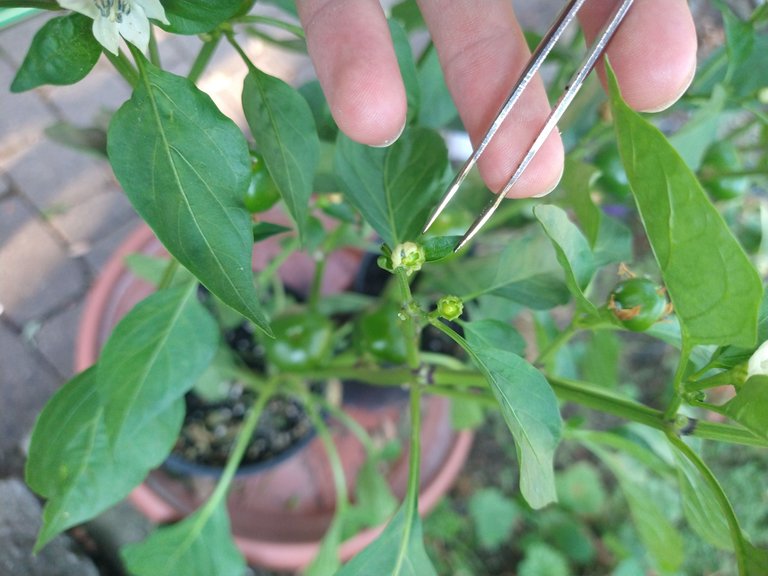
2. From some plants I remove every part of the flowers aside from the stigma, which is the most inner part in this case. Those will be the female plants. If possible I keep the outer petals to protect the fragile stigma, but most of the time there's no way around it. The rest of the flowers can stay untouched and will serve as the male plants
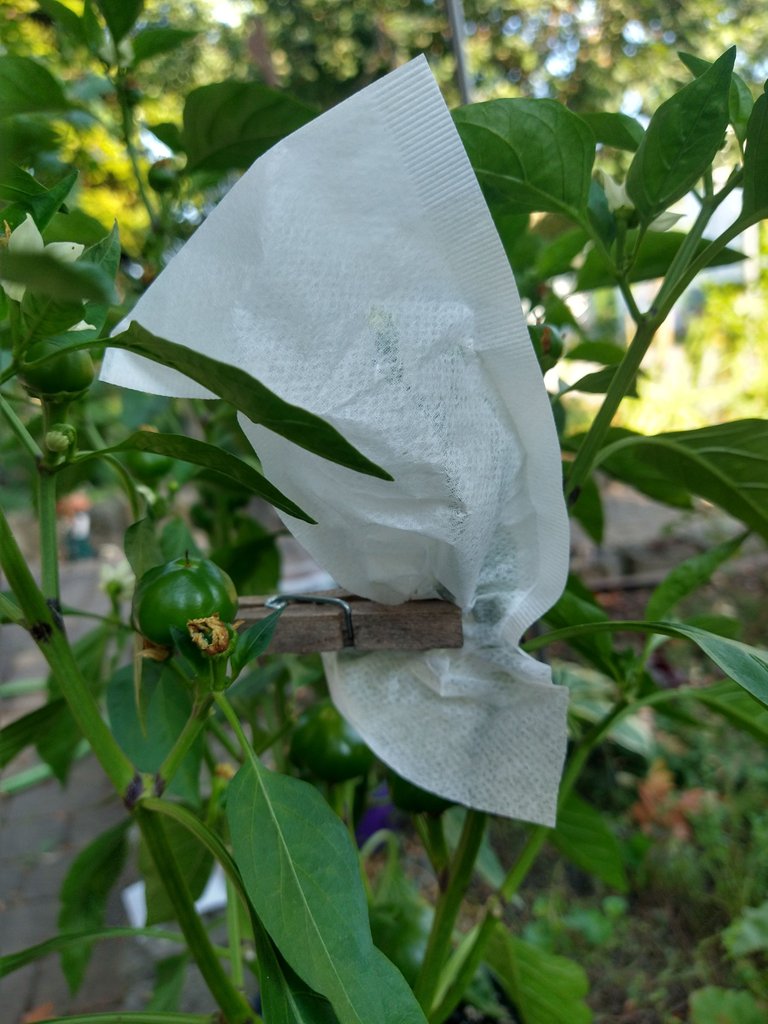
3. Hide all the flowers that are getting used inside paperbags. Teabags are perfect for this job.
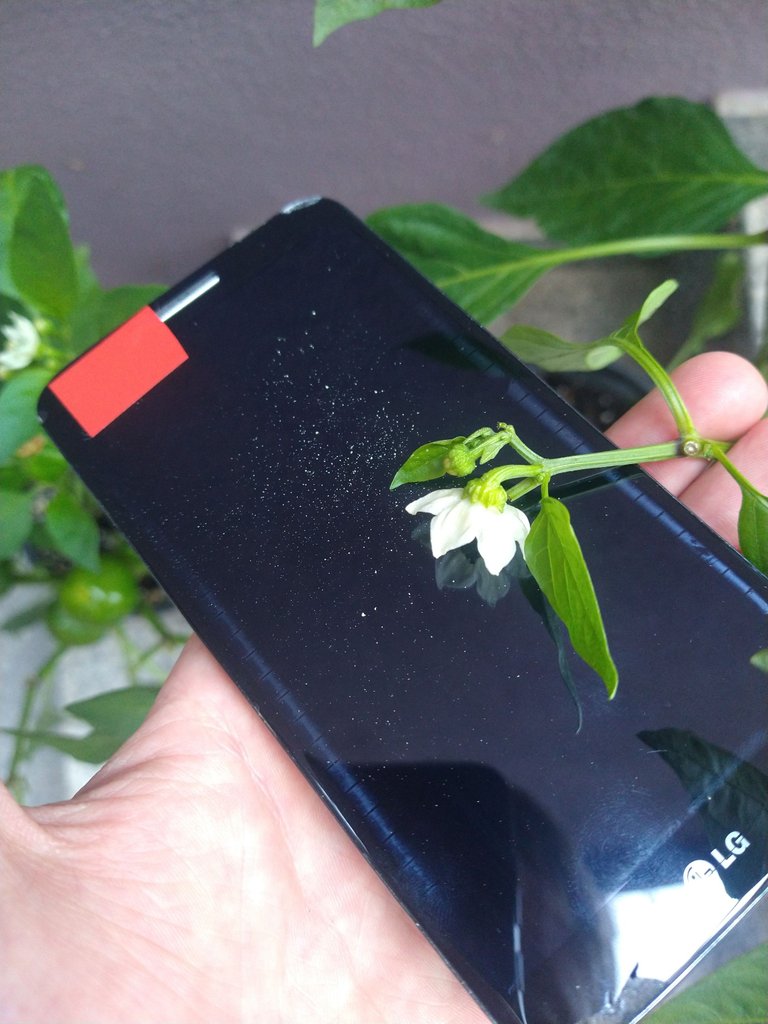
4. Regularly check if the flowers opened. If so I would suggest to use your smartphone and give the flower a little flick. If the pollen is ready, you should clearly see it on the black touchscreen surface.
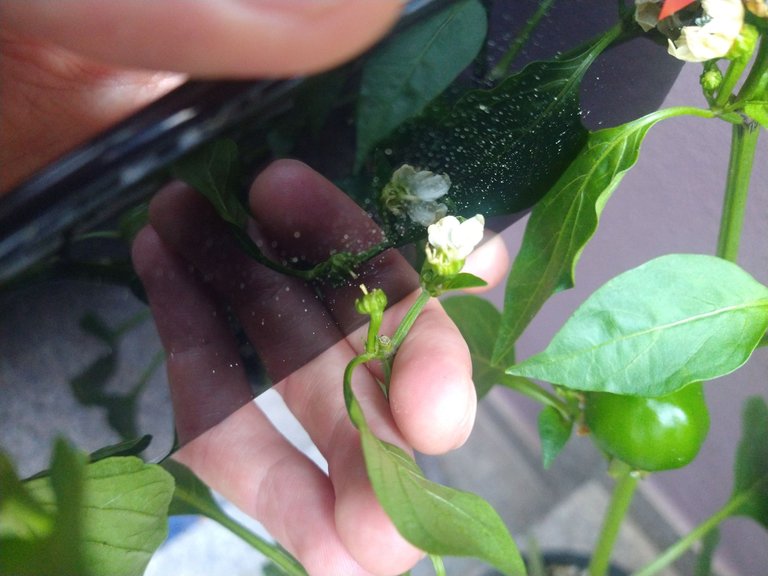
5. Take the flowers that were stripped and dip the stigma in the collected pollen. Be gentle. If the style breaks off, the flower is useless. Finally put the teabag back on the flower. Once you see the fruit develop, you can remove it, otherwise the fruit will just break it eventually. Make sure to label that flower so you'll be able to find the right one. I like to use clothspins for that.
Two plants are way less than I would like to have, but sometimes you have no other choice. If the next generation develops poorly I might have to buy new seeds.
What could go wrong?
Few years ago an elderly couple had a lethal poisoning from zucchini that might have mixed with an inedible pumpkin. They could have realized the bitter taste and avoided eating it, but it shows how dangerous some hybrids can be, nonetheless.
Also very important for successfull seed harvest is to CLEARLY label your flowers or someone might harvest them and cook your precious seeds into tomato soup...
Some strains are also very hard to breed. In one case I only have a single plant left and can't get them to make seeds. Also some hybrids are infertile and won't produce any seeds.
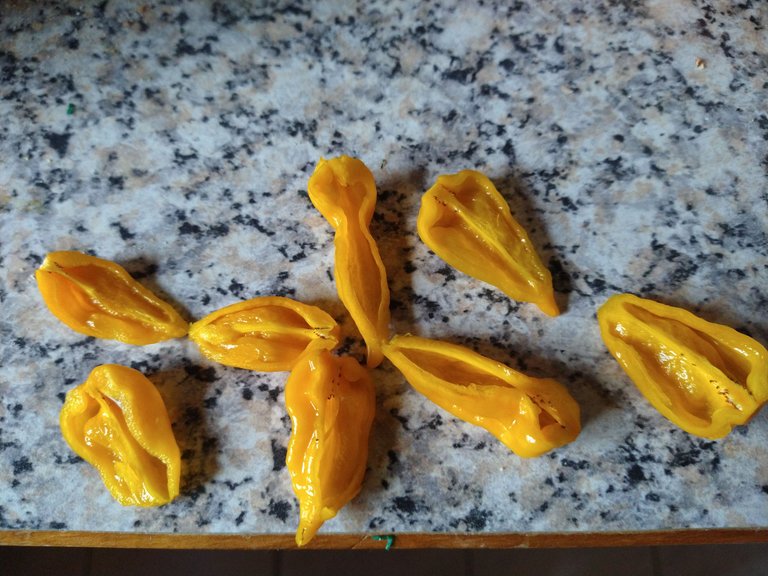
Trying to get seeds from my only remaining Fatalii plant, but none of the berries contained a single seed.
Down with the sickness
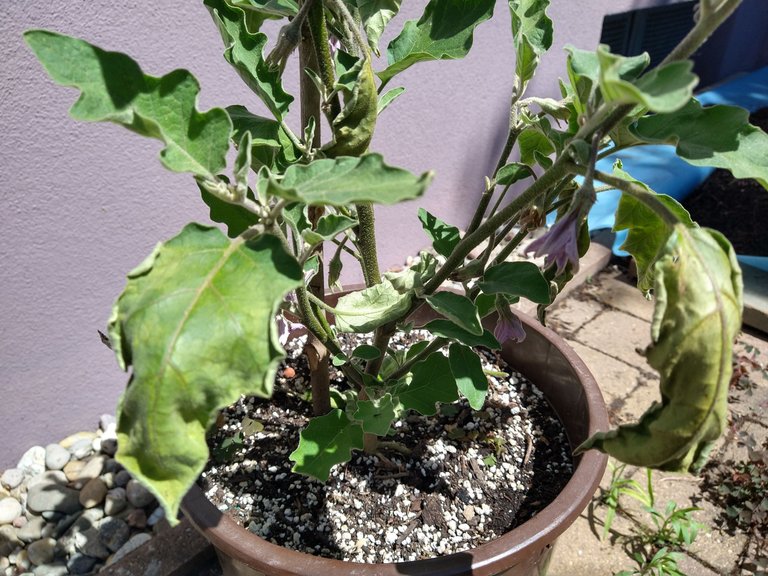
Random leaves are dying like they are not getting water.
With the abundance of rain last year and the lack of rain this year, we had very little issues with deseases so far. But something seems to be going on.
The eggplants were about to become a disaster, just like every year. No idea what it is this time, but assume some sort of fungus. Some of the leaves started hanging and eventually dying even with proper watering. Same phenomenon can be observed on the luffa. This happened last year already and now it's the same story once again.
Fungus? Virus? No idea. I used some fungizide on the eggplants and the situation improved afterwards, but this can't be the solution. I might have to boil the soil to eradicate the turmoil, before using it again, but I want to use the seeds from those plants which might contain spores or viruses that would infect the soil over and over again.
Most cucurbitaceae get sick at some point, but luffas need to be fully ripe to be of use as a sponge material and they are growing quite slow to begin with.
Let's hope for some harvest this year.
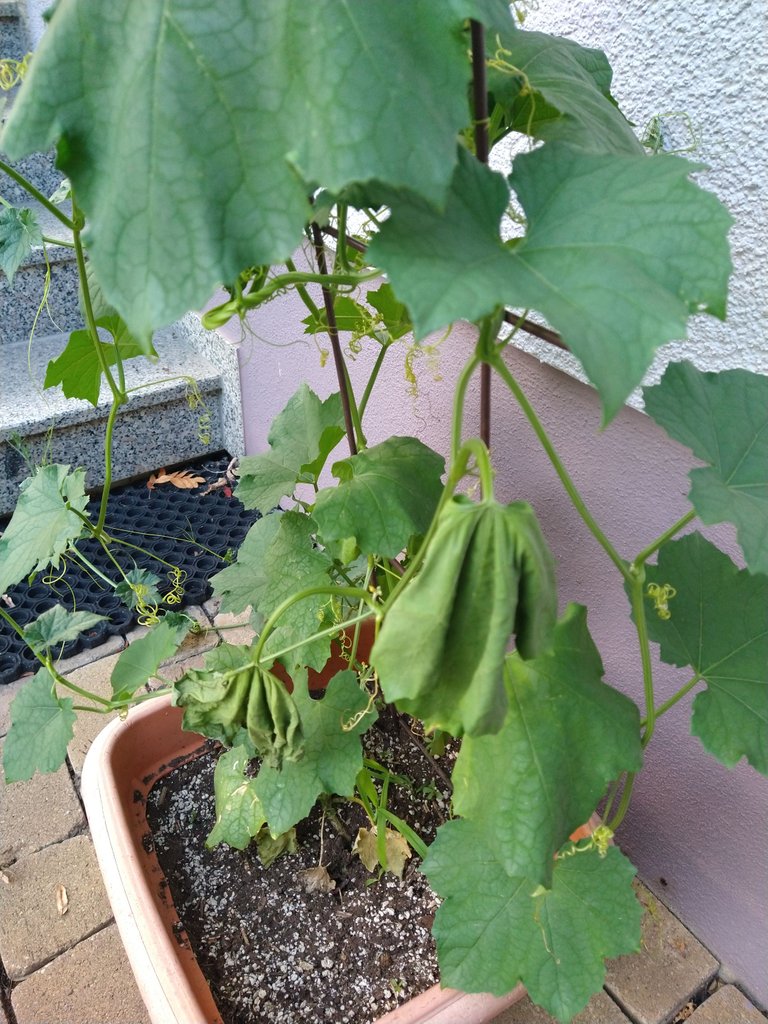
Same with the luffa cylindrica. Last year the whole plant died from this. Luckily the aeagyptiacas in the backyard are still looking fine, even though they had the same symptoms at some point.
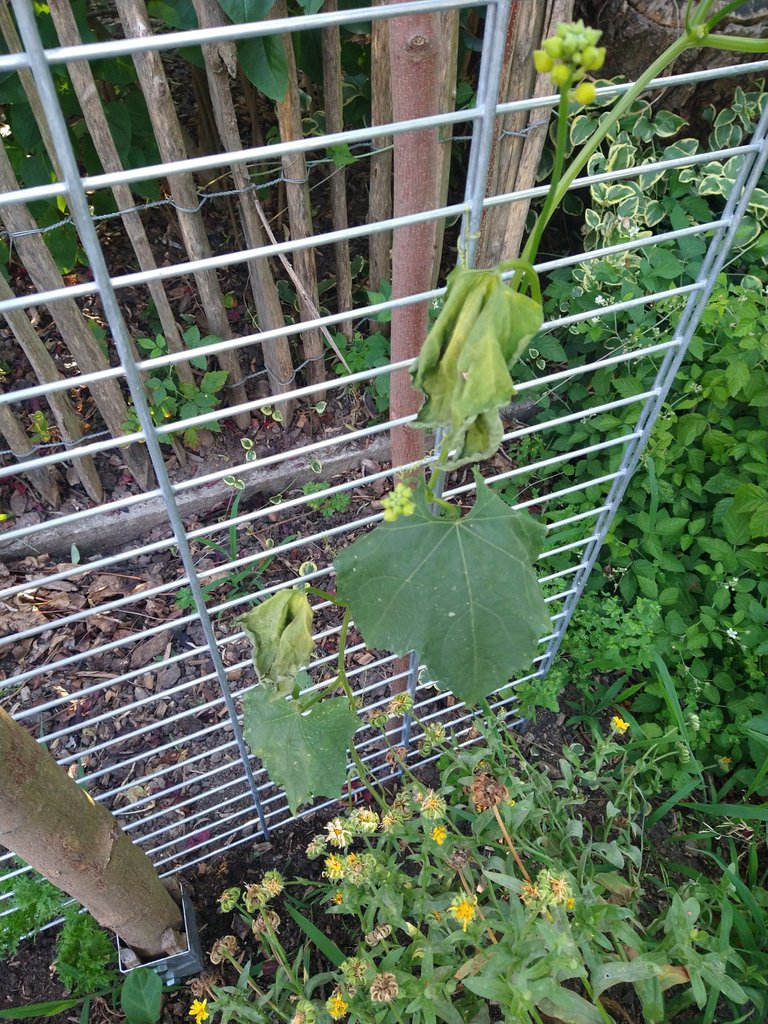
Luffa aegyptiaca with random leaves dying.
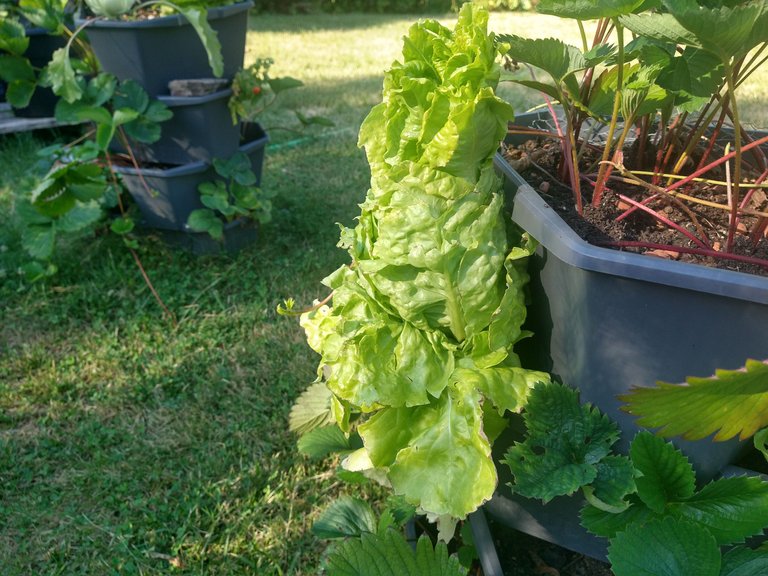
I can't get a proper lettuce this year. It's either shooting or getting brown leaf edges. Most likely way too hot right now.
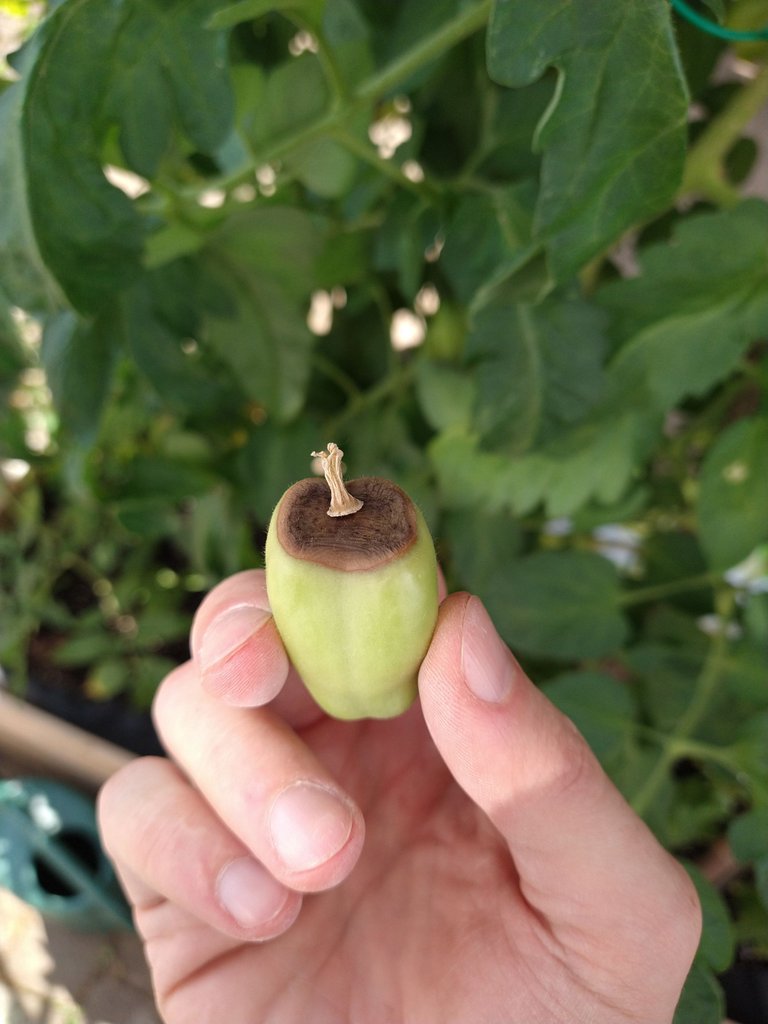
Didn't think I'd have issues with calcium deficiency, but the potted 'San Marzano' thinks otherwise.
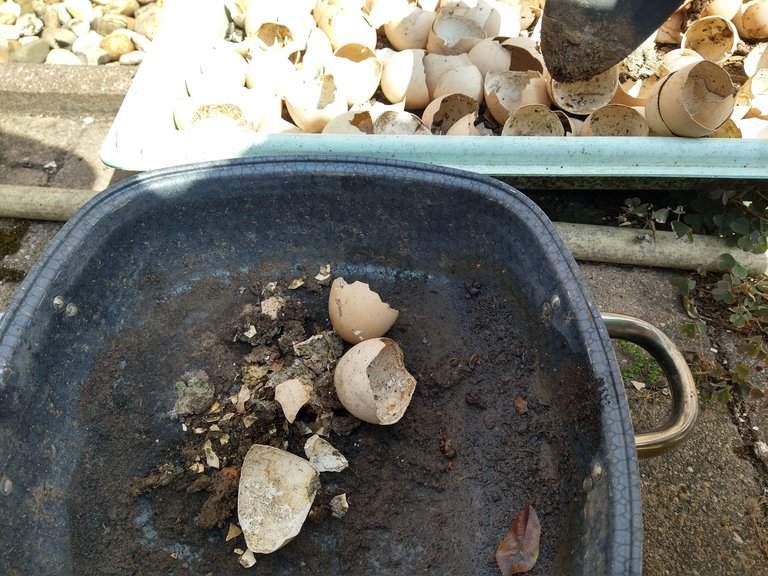
Placed some eggshells next to the house to catch the dovepoop from the roof and created my very own guano. For safety reasons I boiled it before putting it on the tomatoes. Maybe that will help.
Weed Control
Some people seem to get a thrill from crawling on the ground, picking every bit of organic matter to discard it in the trash. I'm not like that. I'm a lazy gardener. More so, I don't really see the purpose of such behaviour and therefore I spend as little time as possible on weedwhacking.
My two major strategies for weed control are:
Don't water. I always put a generous amount of water in every planting hole, but afterwards I avoid watering the plants. This way the plant is developing a deeper root system, which makes it less subsceptible to droughts and makes watering needless. This might not work for all plants, especially not on the ones planted later in the year, but I'm overall quite happy with the results. If I do have to water, I make sure to put it on one single spot in order not to moisturize the entire surface of the garden. Beeing close to groundwater level is obviously very helpfull. Without any rainfall there will also be very little weeds.
Mulching. Not only does mulching help save even more water, but it's also quite effective on avoiding unwanted green. Grass cuttings and wood chips are one way of doing it, but I've also been using the black plastic bags from gardening soil. This is something I want to avoid in the future, though as plastic is never a great idea to use in the garden. I guess microplastics will be inevitably part of our future, but no need to contribute to the problem even more.
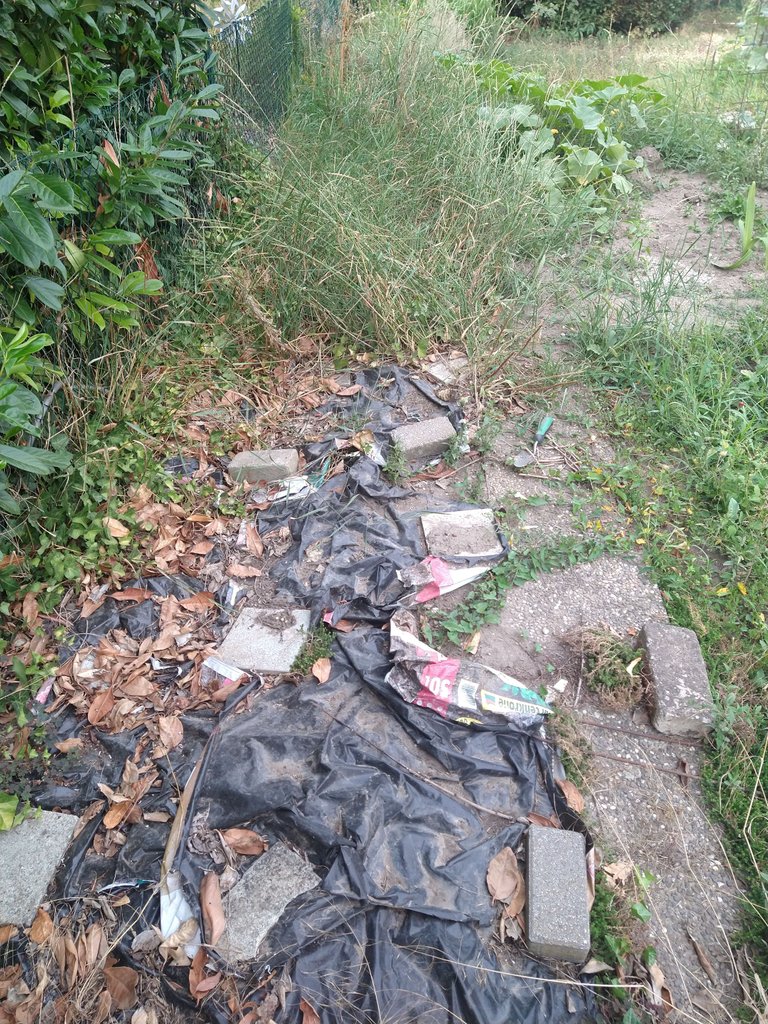
Those bags were placed last year and all that's growing is that darn ivy from the neighbours garden. In the background you can see how this spot would look like without that cover.
This works until you want to plant some seeds. They need water to sprout and the weeds will happily take a sip as well, leaving you with something like this:
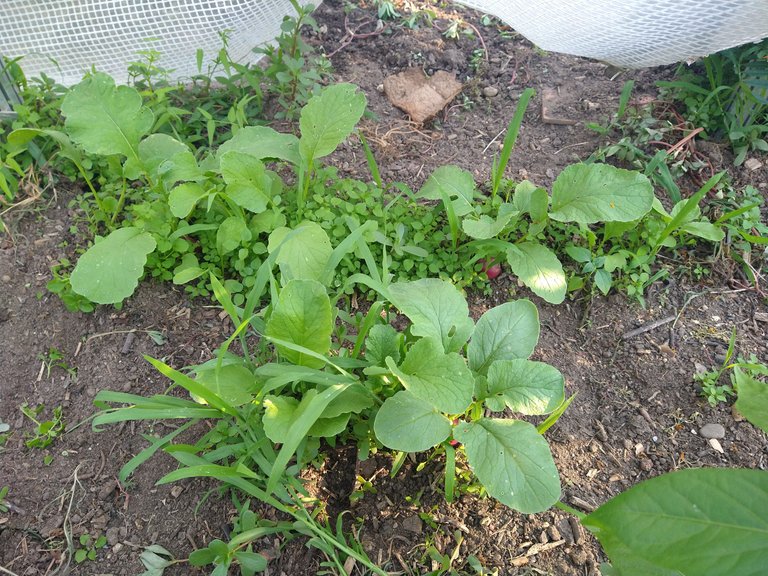
But this can be avoided with gardening hacks! Remember me watering the empty space in my garden above? This is the reason! By watering the ground BEFORE I sow or plant anything I promote the germination of weeds, which then can be killed and eventually replaced with the good stuff. In order for this to work it's important not to move the soil too much after this procedure, so the remaining weed seeds are not pulled to the surface.
Your welcome.
Elixir of Life
With the recent shortage of rain, having a reliable water source has become more and more important. Even though I'm not watering the garden a lot, the potted plants need a regular fix in order to survive those scorching days. Like mentioned before, we are very close to groundwater and can use our well to water the garden. As long as the pump is working.
A few weeks ago the pump control stopped working properly, which was convenietly the only time we had at least a bit of rain. Seems like the electronics had a little weakness attack and now fails to engage the relay after the unit is powered on. Resetting it fixes the issue, but requires the heavy concrete lid over our well to be moved and is therefore not an option. I might have a shot at fixing it later, but there's nothing obviously broken, so we decided to replace the whole pump control and I might take a closer look at it during the winter.
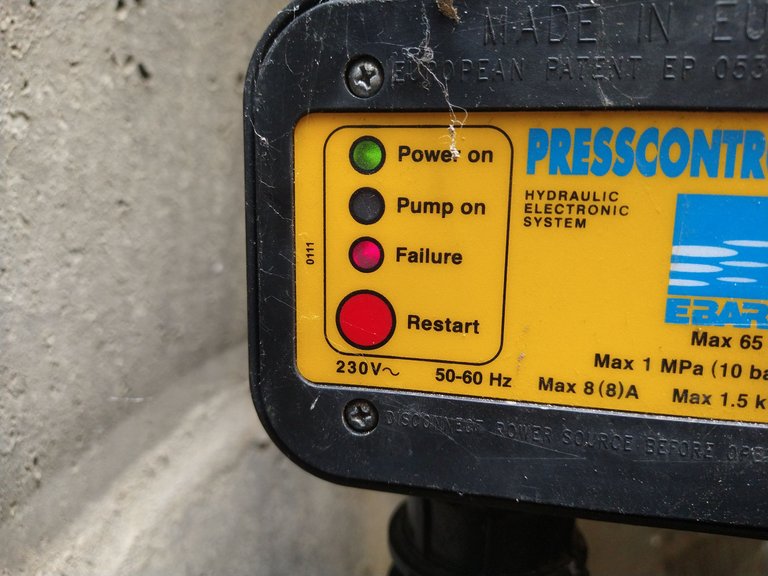
Pump control doesn't start the pump and therefore goes into failure mode after switching the power on.
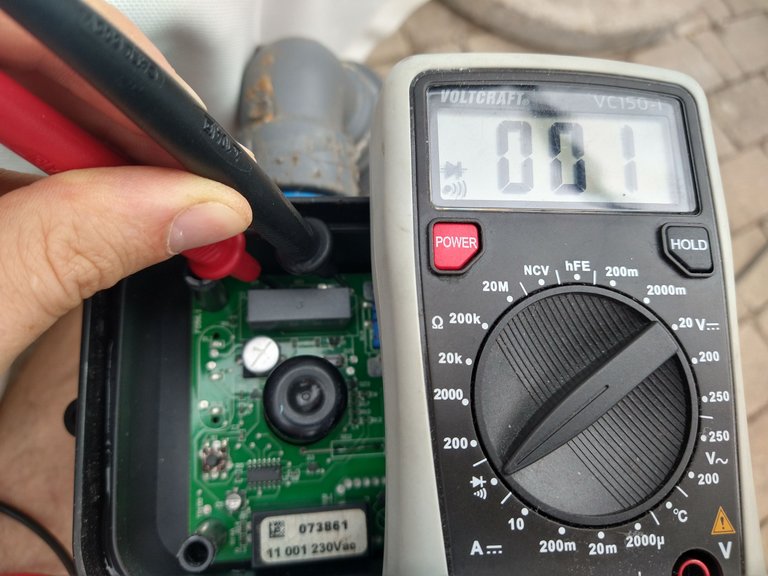
Did some measurements and figured the relay is not getting enough voltage. Nothing looks funky, so it's probably not an easy fix.
Right at the same time our neighbours had their well failing for some unknown reason and now their whole garden and pond are running dry, which showed again how important redundancy is. Not only that, but also some plants do not tolerate groundwater or any water with minerals in it and can only be watered with rainwater. As we also have big roofs that you have to pay wastewater fees for, we decided to install one of those big arse IBC containers and hook it up to our carport gutter. Not only is this saving on taxes, but also provides a nice backup.
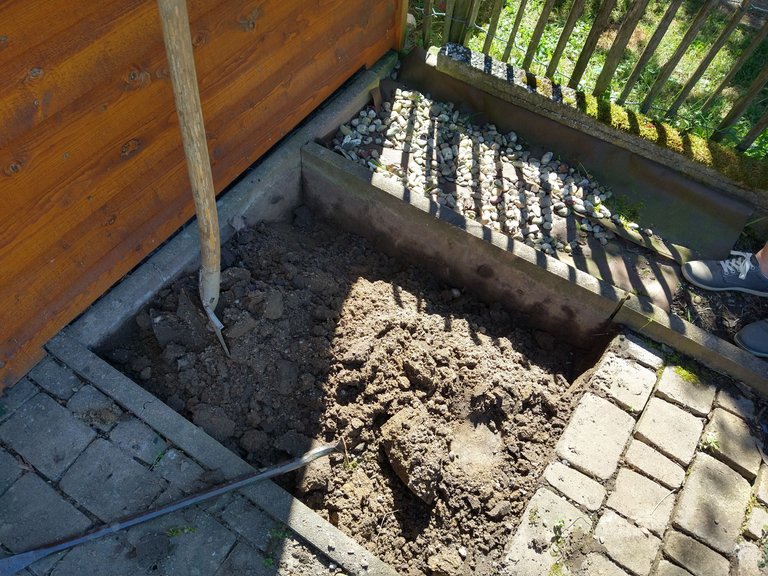
First I removed the old pavement and moved the curbstones.
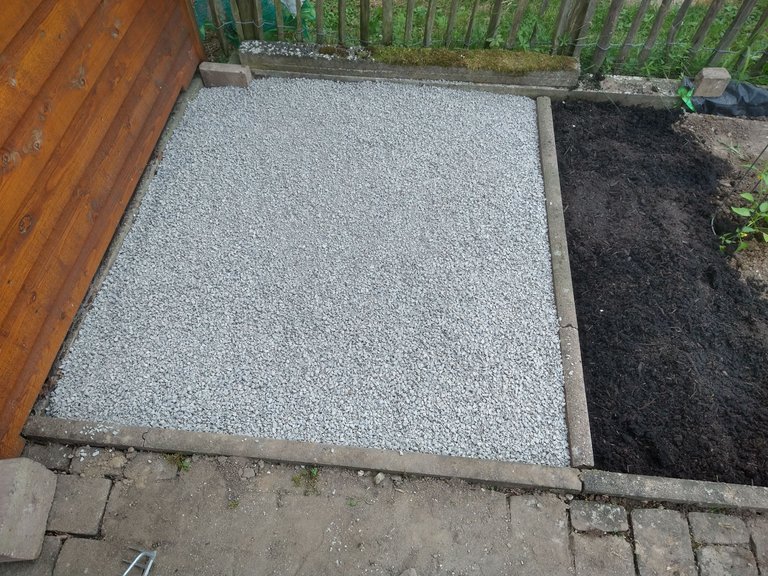
Filling it up with some gravel.
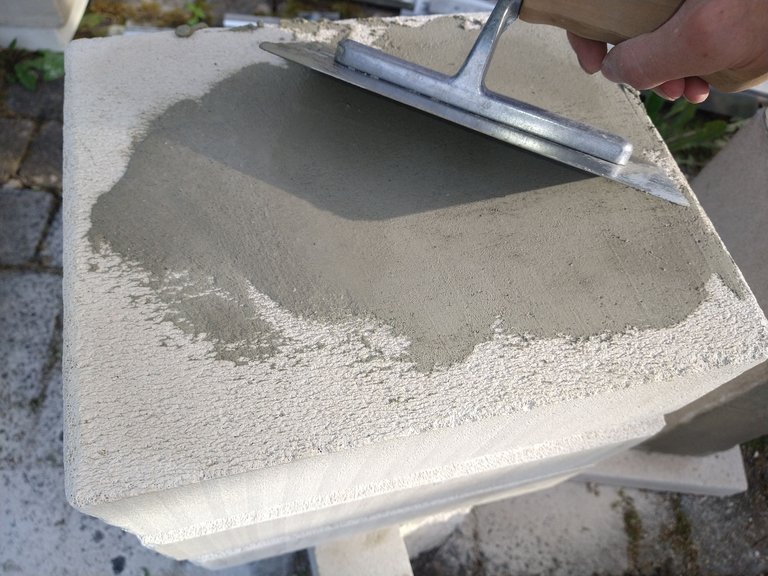
And finally waterproofing some AAC bricks we had lying around to put the container on a pedestal.
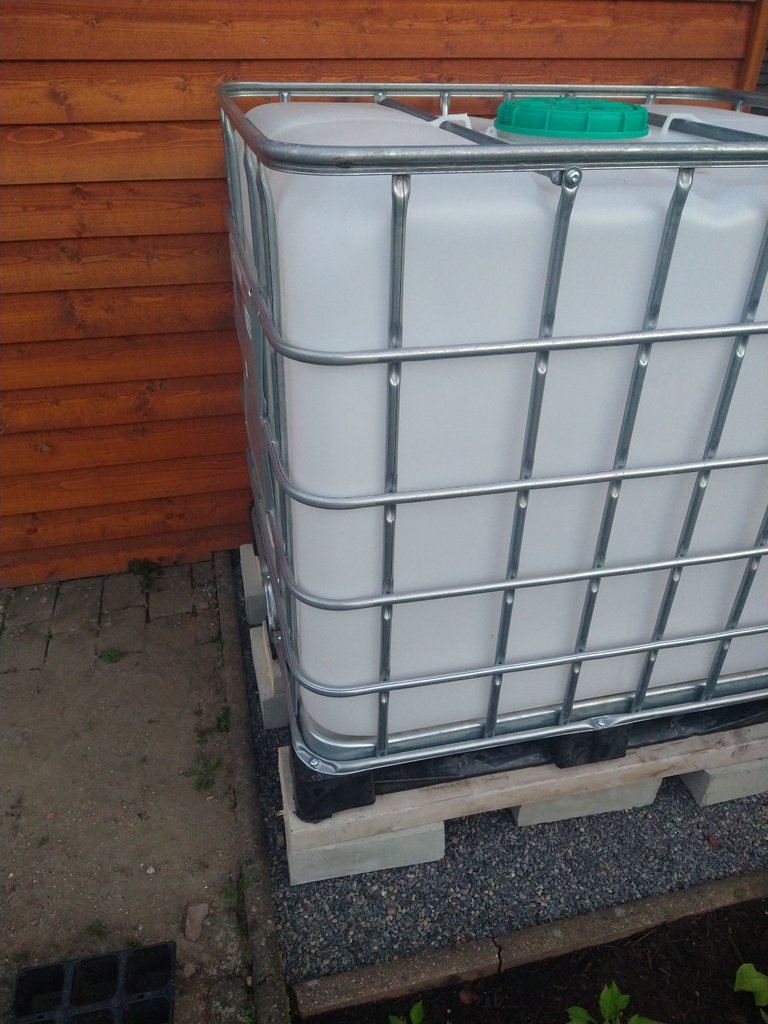
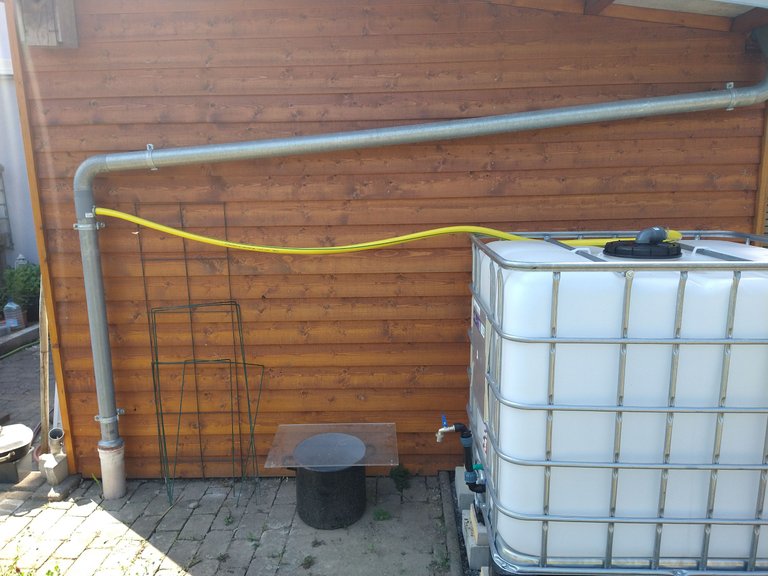
Final result after some plumbing. Now we will just have to wait one, two, three months for some rain to test it.
Coming next
So much is going on and I can't put everything in one post, so there's another one alredy in the making. Be prepared for:
- More air layering
- DIY insecticide
- Bonsai
- Aquaponic
- And of course more snails weary of life
Thanks for checking my little garden update and a big thumbs up to the amazing hive garden community with the amazing #gardenjournal and curation efforts!
Preserve and don't disturb!🙏👍
What a fun plant post🌿